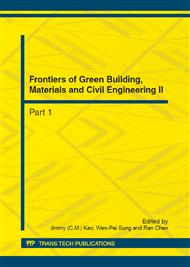p.206
p.211
p.216
p.221
p.227
p.231
p.235
p.239
p.243
Effects of Aspect Ratio on Average Daily Shading Factor of Flat-Plate Solar Collector Array in Winter Months
Abstract:
A model to calculate daily shading factor of flat-plate solar collector array installed on the limited horizontal roofs has been developed. The relations between the latitude, the average daily shading factor, the floor area, and the aspect ratio of the collector array have been deeply studied. The results show that the average daily shading factor on winter solstice day increases with the increase of the latitude and aspect ratio. For a given latitude, the average daily shading factor of a collector array (floor area ≥ 500 m 2) increases linearly with the increase in the aspect ratio within a range of [1/10, 3/1] and increases smoothly with the aspect ratio ranging from 3/1 to 10/1. The average daily shading factors do not exceed 0.085 for the low latitude regions (lat. ≤ 30o N), whereas the maximum average daily shading factors for a 1000m 2 collector array can reach 0.140 when the latitude is close to 40o N.
Info:
Periodical:
Pages:
227-230
Citation:
Online since:
August 2012
Authors:
Keywords:
Price:
Сopyright:
© 2012 Trans Tech Publications Ltd. All Rights Reserved
Share:
Citation:



